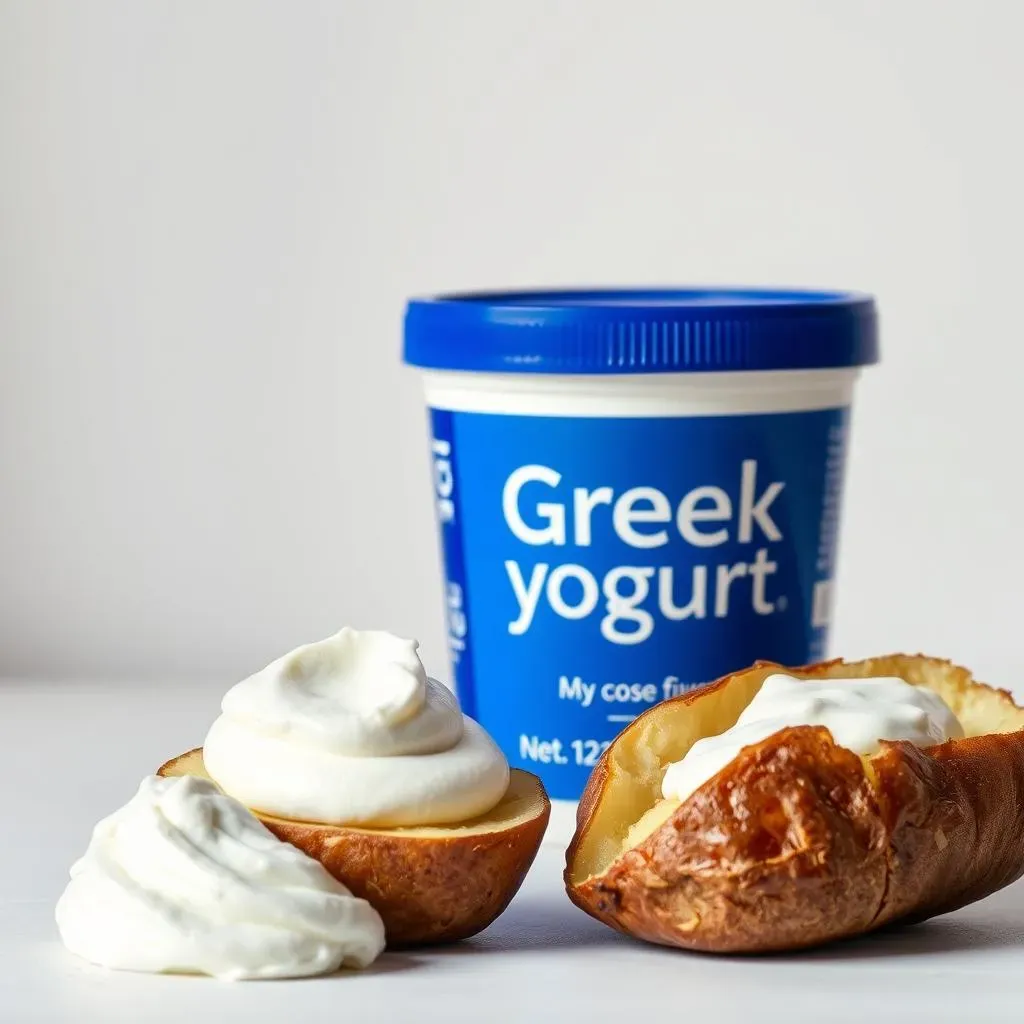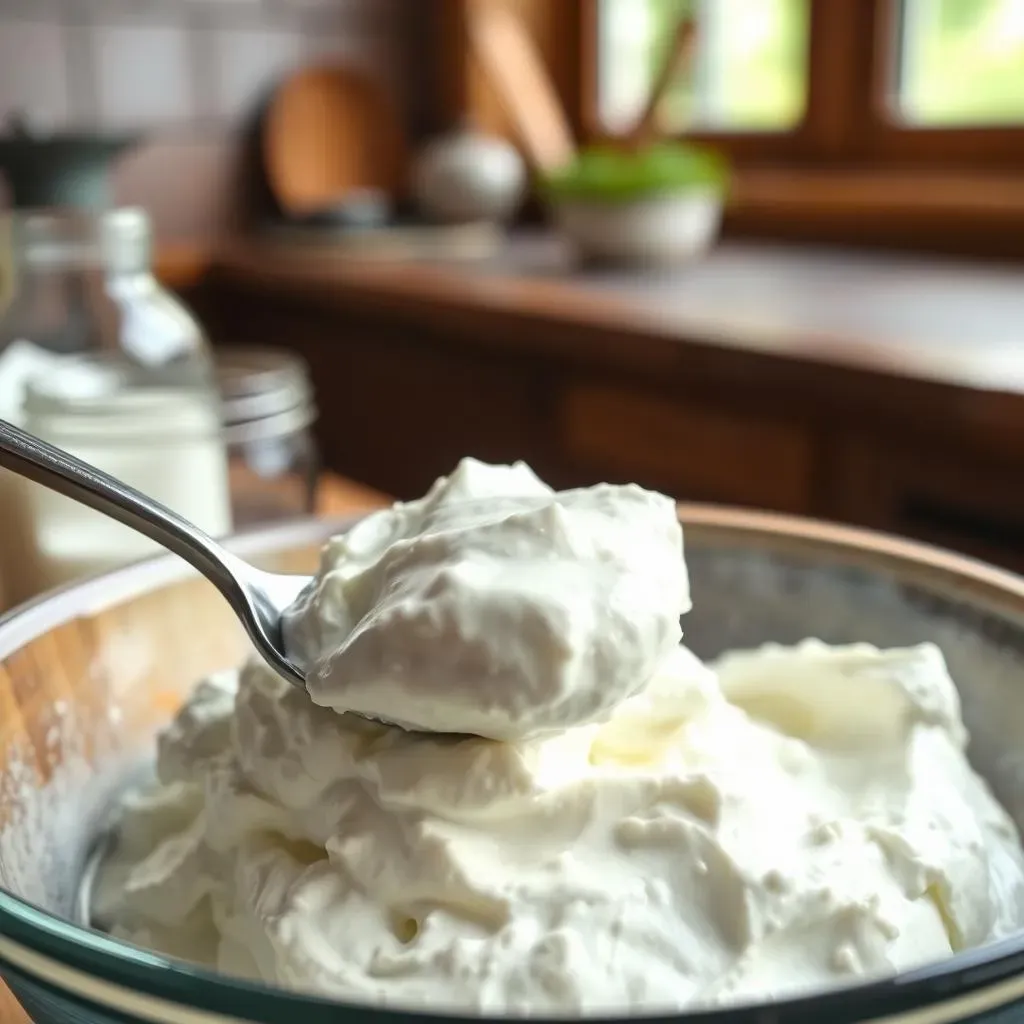Table of Contents
Ever stared into your fridge, craving that creamy tang of sour cream, only to find an empty container? I've been there. That's when I started wondering if there's a substitute. And then it hit me, what about Greek yogurt? It's thick, it's tangy, but is it really a match? This article will walk you through everything you need to know about using Greek yogurt instead of sour cream. We'll explore why it works so well, how to use it in your favorite recipes, and we'll settle the big question: is greek yogurt a good sour cream substitute? We’re going to get into the nitty-gritty of texture, taste, and how well they behave in cooking. By the end, you'll be a pro at swapping these two in your kitchen, and maybe even prefer the yogurt swap. This isn't just about a simple swap; it's about understanding the science and art of cooking, and how a little substitution can make a big difference.
Why Greek Yogurt is a Solid Sour Cream Substitute

Why Greek Yogurt is a Solid Sour Cream Substitute
The Texture Tango
Okay, let’s talk texture. Sour cream is known for its thick, smooth, and kinda luxurious feel. Now, Greek yogurt? It's not far behind! The way they make Greek yogurt removes a lot of the liquid, which leaves it super dense and creamy. This means it can mimic that rich mouthfeel of sour cream quite well, especially if you go for the full-fat version. Think about it: both are thick enough to dollop on a baked potato without running all over the plate. That’s a win in my book.
But it’s not just about being thick. The magic is also in the way it coats your tongue. Both sour cream and Greek yogurt have this ability to create a velvety sensation, which is why they feel so satisfying. You're not getting that watery, thin consistency you might find with some other substitutes. And honestly, that's half the battle when you're trying to find a good swap.
Flavor Face-Off
Flavor-wise, both sour cream and Greek yogurt bring a tangy note to the table. Sour cream gets its tang from lactic acid, which is the result of milk fermentation. Greek yogurt goes through a similar process, so it has that same kind of tartness. The difference is that Greek yogurt tends to have a slightly more pronounced tang, which, in my opinion, is a good thing. It adds a little extra zing to dishes.
However, if you're not a fan of a strong sour flavor, you can easily adjust this. For example, you can mix a little bit of milk or water to tone down the tang, or add a touch of honey or maple syrup to sweeten it. The point is, both have that essential sourness that makes them a good match for each other, and you can tweak Greek yogurt to fit your taste preferences. They are not exactly the same, but close enough that most people won't notice the difference.
Feature | Sour Cream | Greek Yogurt |
|---|---|---|
Texture | Thick, smooth | Very thick, creamy |
Tang | Moderate | Slightly stronger |
Fat Content | Higher | Varies, lower options available |
How to Use Greek Yogurt as a Sour Cream Substitute

How to Use Greek Yogurt as a Sour Cream Substitute
The Basics: Swapping One for One
Okay, so you're ready to ditch the sour cream and embrace the Greek yogurt life? It's simpler than you might think. For most recipes, you can do a straight one-to-one swap. If your recipe calls for a cup of sour cream, use a cup of Greek yogurt. That's it. This works great in things like dips, sauces, and even as a topping for tacos or baked potatoes. I've done this countless times, and honestly, nobody ever notices the difference. It's like a secret healthy upgrade that no one suspects.
Now, here’s a little tip: if you’re using non-fat Greek yogurt, it might be a tad thinner than full-fat sour cream. If you're making something where the thickness is super important, like a thick frosting, you might want to use a full-fat Greek yogurt. Or, you could try adding a tiny bit of cornstarch to the non-fat yogurt to help thicken it up. But honestly, for most uses, the one-to-one swap is your best friend.
Baking with Greek Yogurt
Baking is where things can get a little more interesting. You can absolutely use Greek yogurt in baking, but there are a few things to keep in mind. First, the moisture content. Greek yogurt tends to have more moisture than sour cream, which can sometimes make your baked goods a little denser. To combat this, I've found that using full-fat Greek yogurt works best, as it helps maintain that richness and texture. Also, don't be afraid to reduce the amount of other liquids in your recipe by a tablespoon or two to balance things out.
Another thing to consider is the tang. Since Greek yogurt has a stronger tangy flavor, it might come through in your baked goods. This can be great for things like cakes or muffins where you want a bit of that zing. But if you're making something very delicate, like a vanilla cake, you might want to add a touch of sugar or vanilla extract to offset that tanginess. It's all about experimenting and finding what works best for your taste.
Adjusting for Taste and Texture
Alright, let’s talk customization. Sometimes, you might want to tweak the yogurt to get it just right. If the Greek yogurt is too thick, you can thin it out with a splash of milk, water, or even some lemon juice. Just add a little bit at a time until you reach your desired consistency. And if the tang is too much for your liking, a pinch of sugar or a drizzle of honey can work wonders. I like to add a tiny bit of salt to balance the flavors. It's all about playing around and finding that sweet spot.
Also, consider what you're making. If you're making a cold dip, the tang of Greek yogurt is usually a welcome addition. But if you're using it in something that will be cooked, the flavor might mellow out a bit. Don’t be afraid to taste as you go and adjust accordingly. Cooking should be fun, not a rigid set of rules. Remember, you're the boss of your kitchen, so make the yogurt work for you!
Problem | Solution |
|---|---|
Too thick | Add milk, water, or lemon juice |
Too tangy | Add sugar, honey, or a pinch of salt |
Too thin | Use full-fat yogurt or add a tiny bit of cornstarch |
Is Greek Yogurt a Good Sour Cream Substitute: The Verdict

Is Greek Yogurt a Good Sour Cream Substitute: The Verdict
Alright, so we've gone through the texture, the flavor, and all the ways you can use Greek yogurt as a stand-in for sour cream. Now, for the big question: Is it actually a good substitute? My answer is a resounding YES! It’s not just a decent swap; in many cases, it’s a fantastic one. You get that creamy texture, that tangy flavor, and a whole lot of flexibility. Plus, it's often a healthier option, with more protein and less fat than traditional sour cream, which is a nice bonus. I've been using it this way for ages, and it's never let me down. You can use it on tacos, in dips, in baking, you name it. It’s like having a secret weapon in your kitchen, ready to make any dish just a little bit better. So, if you're looking to lighten things up or simply ran out of sour cream, give Greek yogurt a try. You might just be surprised at how well it works.